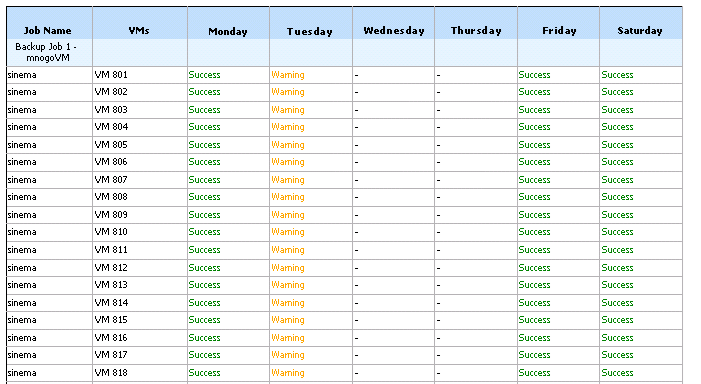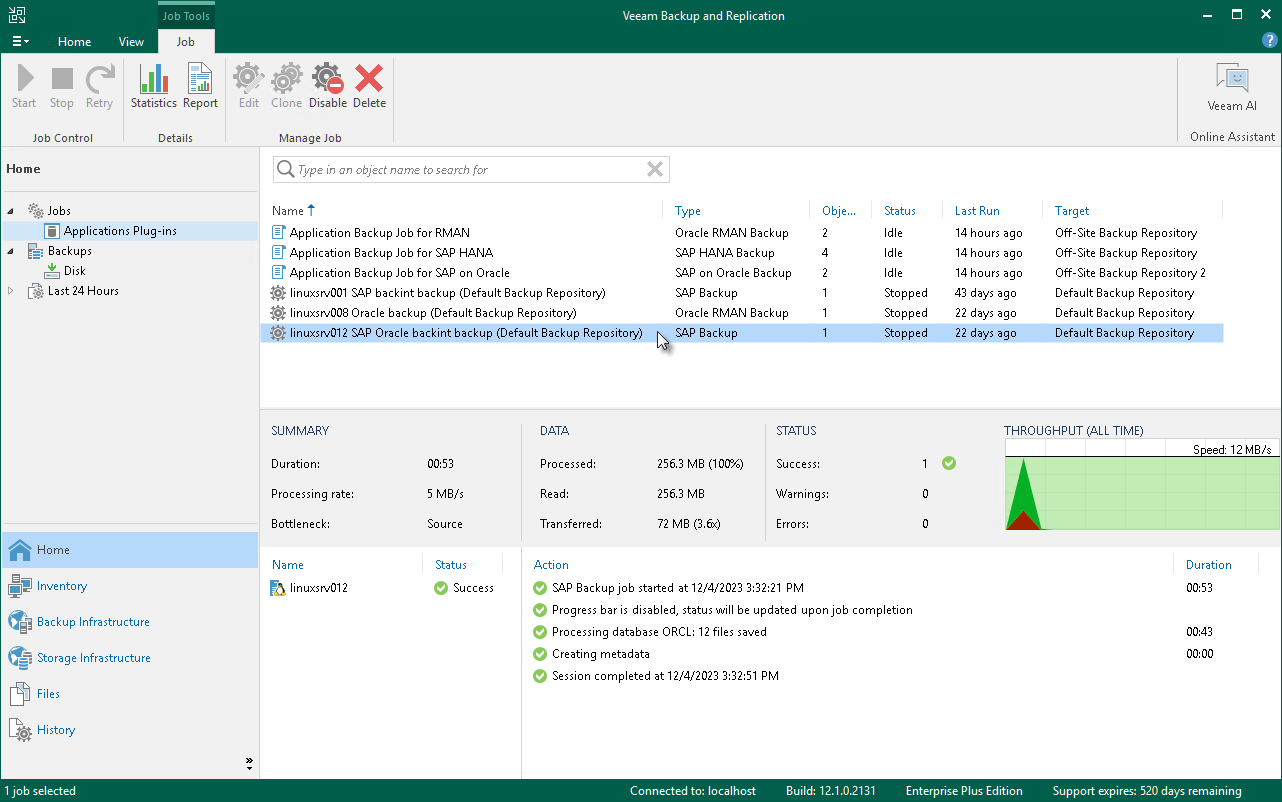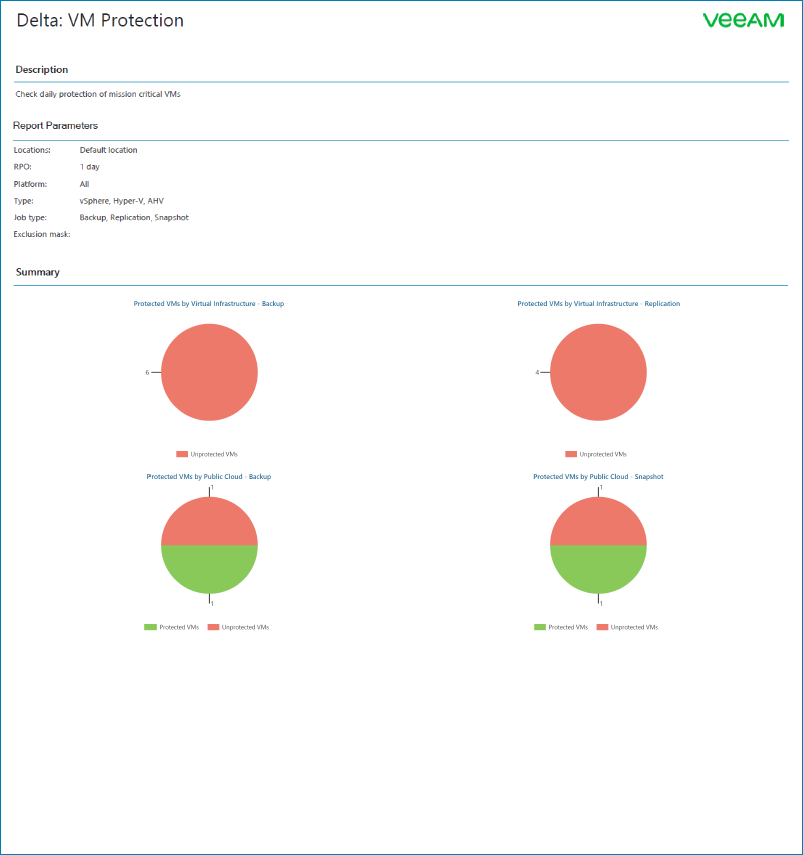
- VEEAM BACKUP REPORTS FULL VERSION
- VEEAM BACKUP REPORTS ARCHIVE
- VEEAM BACKUP REPORTS FREE
- VEEAM BACKUP REPORTS WINDOWS
VEEAM BACKUP REPORTS FULL VERSION
If you need more, you can easily upgrade to the full version of Veeam Backup & Replication- install a license key. It complements your regular backup tool by providing easy ad-hoc backups of individual VMs.
VEEAM BACKUP REPORTS FREE
File Manager: the easy way to manage VM and host files, Quick Migration for VMware: migrate a live VM to any host or datastore.Veeam Backup Free Edition provides a number of powerful utilities for managing VMs. generate a Hyper-V Reporting to assist people to do virtualization inventory. Veeam Backup Free Edition contains useful utilities for day-to-day VM management: VeeamZIP: ad-hoc backup for operational, archival or portability purposes,Instant File-Level Recovery: restore individual guest files directly from an image-level backup. BACKUP EAGLE Reporting for Veeam includes all evidence of your backup jobs and configuration changes as well as reports and analyses of your Veeam backup. Show that Veeam Backup & Replication has all the tools that, if used right. Useful utilities for day-to-day VM management: VeeamZIP, Instant File-Level Recovery, File Manager, Quick Migration for VMware.
VEEAM BACKUP REPORTS ARCHIVE
And however you do regular backups, Veeam Backup Free Edition is a must-have tool for managing your VMs.Veeam Backup Free Edition, you can quickly: Backup, archive or copy a VM Restore data from inside a VM Migrate and manage VMs and files. The ratios in the PowerShell report will calculate the overall. But with VeeamZIP you can easily backup a VM for restore on any host.Whether you use VMware vSphere, Microsoft Hyper-V, or a combination of both, Veeam Backup Free Edition fits right into your environment. PowerCLI Veeam Backup & Replication will launch the Microsoft Azure Powershell. And if you have to power off or pause the VM, it can be disruptive, too. Verify that you have a backup copy of any custom extensions and custom assemblies you are using.Cloning, copying or exporting a virtual machine (VM) can be time-consuming and resource-intensive. Remember to back up any script files (.rss) that you created for administration or deployment tasks. These include report definition (.rdl) files, shared data source (.rds) files, data view (.dv) files, data source (.ds) files, report server project (.rptproj) files, and report solution (.sln) files. Al together they help increasing the performances during the backup jobs by running parallel jobs or tasks and limiting the OS licensing only to specific machines.
VEEAM BACKUP REPORTS WINDOWS
Web.config for the Report Server ASP.NET applicationīack up the files that you create and maintain in Report Designer. As of Veeam version v10, there is the option to expand and promote Linux machines to work as Veeam backup proxies.This allows to add more backup proxies along Microsoft Windows based machines. You should back up the files when you first configure the server and after you deploy any custom extensions. Reporting Services uses configuration files to store application settings.

If you recreate the reportservertempdb, it is important that it have the same name as the primary report server database.įor more information about backup and recovery of SQL Server relational databases, see Back Up and Restore of SQL Server Databases.įor SharePoint mode report servers, see the "Key Management" section of Manage a Reporting Services SharePoint Service Application. If you lose reportservertempdb, the only way to get it back is to recreate the report server database.

In the event of hardware failure, it is not necessary to recover the data in reportservertempdb, but you do need the table structure. For more information on counters in the report, see Report Counters. The only reason to back up the reportservertempdb is to avoid having to recreate it if there is a hardware failure. Veeam Backup & Replication, BridgeHead Healthcare Data Management, and Micro Focus. You can use different backup schedules for each database. Use the simple recovery model to back up the reportservertempdb database. Use the full recovery model to back up the reportserver database. Here are some recommendations specific to the report server databases: You can back up the reportserver and reportservertempdb databases using one of the supported methods for backing up SQL Server databases.



 0 kommentar(er)
0 kommentar(er)
